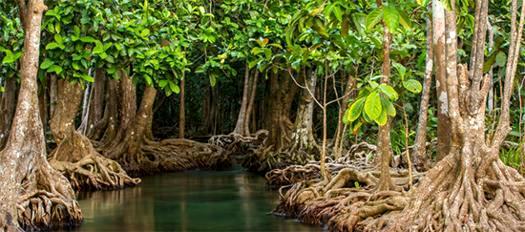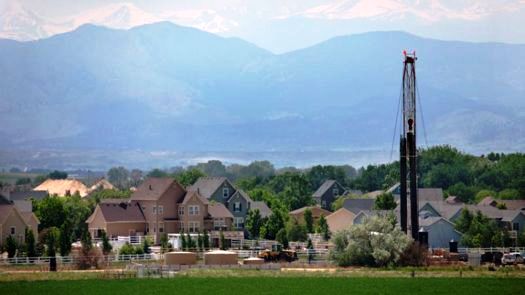Lima, Peru – The economic and social benefits of mangroves – which are estimated to run into the hundreds of billions worldwide – remain largely untapped due to a lack of carbon finance mechanisms, appropriate policy interventions, and rapid mangrove deforestation, according to a new United Nations Environment Programme (UNEP) report launched on December 9 at the 20th Conference of the Parties on Climate Change.
The “Guiding Principles for Delivering Coastal Wetland Carbon Projects” finds that the potential economic, social and environmental gains from conserving mangroves – 90 per cent of which are found in developing countries and many of which are under threat – including from mangrove inclusion in Reducing Emissions from Deforestation and forest Degradation (REDD+) strategies and protecting and enhancing mangrove stores of carbon, still remain largely under-exploited.

UNEP estimates the economic cost of the destruction of carbon-rich mangroves, which are being cleared 3-5 times faster than terrestrial forests, at $42 billion in economic damages annually.
The report argues that while policymakers and financial markets are beginning to take action, more needs to be done to develop new methodologies for carbon accounting for mangroves and other coastal wetland ecosystems, to conserve mangroves, and to increase the profile of mangroves in REDD+ and the United Nations Framework Convention on Climate Change (UNFCCC).
UN Under-Secretary-General and UNEP Executive Director Achim Steiner said, “As the latest Emissions Gap Report makes clear, countries are increasingly aware of how much progress they need to make to limit a global temperature rise to 2°C. Developing countries have a major climate change mitigation and adaptation asset in the form of mangroves because they hold several times more carbon than terrestrial forests.”
“What is needed now are the right carbon finance mechanisms, and policy interventions, in order to reap the true economic, climate and social gains from this critical ecosystem, which we cannot afford to lose.” he said.
“Part of the answer lies in ensuring, both nationally and internationally, that mangroves have a place in REDD+ strategies and other low carbon development strategies such as National Appropriate Mitigation Actions (NAMAs),” he concluded.
The report makes clear that the management of coastal wetlands is a no-regrets approach, with many additional ecosystem service benefits such as fisheries production and shoreline protection, which promote adaptation in coastal communities.
A number of coastal wetlands carbon project initiatives – which include mangroves – in their infancy in many parts of the world, including Kenya, Senegal, West Bengal, and Sumatra – are already showing indications of success.
The Gazi Bay community-led carbon finance project in Kenya for the conservation, management and restoration of 117 hectares of mangroves has so far sold certificates of 3000 tonnes of carbon dioxide (C02), with funds being allocated to community projects and additional mangrove activities overseen by village leaders.
One of the many successes of the project has been a dramatic reduction in illegal harvesting of mangroves, and it is hoped that the success of the community-based initiatives in these countries will pave the way for other developing countries to start establishing new carbon projects to ensure sustainable ecosystem services to local communities.
However, according to another new report from UNEP, “Carbon Pools and Multiple Benefits of Mangroves in Central Africa Assessment for REDD+”, many countries will be unable to access carbon incentives, improved governance, jobs, and a range of other benefits under the global REDD+ programme unless they include mangroves in their national definition of forests.
The report finds that the mangroves of Central Africa which are found in Cameroon, Gabon, the Republic of the Congo, Equatorial Guinea, Sao Tome and Principe, the Democratic Republic of the Congo, and Angola, could be amongst the most carbon-rich ecosystems in the world, with an estimated release of 1,299 tonnes of C02 per hectare of cleared pristine mangrove.
Unfortunately, between 2000 and 2010, it is estimated that over 100 million tonnes of C02 was released into the atmosphere with the clearing and degrading of 771.07km2 of mangroves in Central Africa, which not only represents a potentially significant economic loss in terms of uncapitalized carbon values, but has many other direct economic and social costs.



















